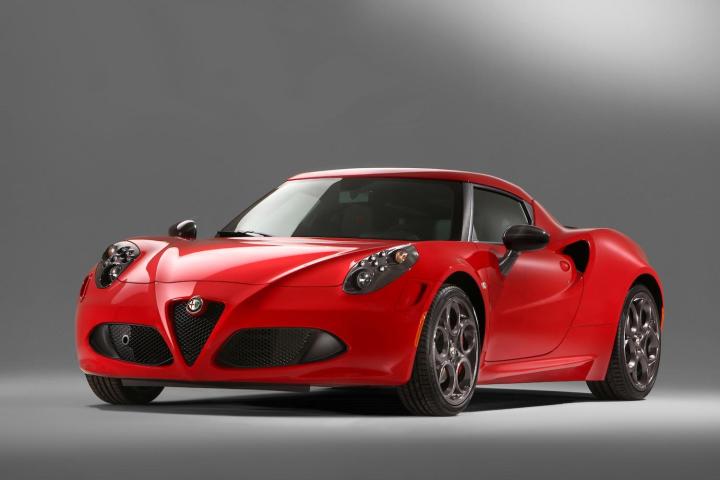
We at Digital Trends are very excited about the forthcoming Alfa Romeo 4C. Although we’ve not yet driven it, the 4C – the first Alfa slated for American shores since the 1990s – should prove everything we love in a car: great to look at, fantastic to drive, and loaded with cool tech.
As the on-sale date – right around the New Year – ticks closer, we’re learning more about the bright red little Italian sports car that the FIAT has proclaimed “a masterpiece.”
In an interview with Automotive News, Fiat’s European product development head, Mauro Pierallini, revealed some of the details behind the highly anticipated car.
The 4C is all about lightness and designers worked tirelessly to remove each gram of unnecessary weight. They used a carbon fiber shell and aluminum frames in the front and rear instead of steel. While these materials are neat, they’re not that distinctive. But they are lightweight.
What are rather distinctive, though, are the strange looking headlights. Initially we thought these were just placeholders during testing for the production headlights. Not so. Apparently they were designed not for a unique look but rather for their lightweight design.
“In these headlamps you just have the lighting parts inserted in a shell. It’s a simple and cheap solution. It’s quite radical, I know, but if I had to design a race car I would choose this solution,” Pierallini said of the headlights.
Despite Alfa’s obsession with lightness, it can’t escape global safety regulations. Specifically, it had to add weight to models destined for U.S. shores.
“The car is about 100kg heavier because we had to add some aluminum inserts in the carbon fiber chassis,” said Pierallini. “The U.S. crash test requires a different structure to absorb different impact forces.”
While we understand the necessary weight bump, it’s still troubling. The Alfa Romeo 4C only weighs 1973 pounds in the Italian factory and is propelled by only 240 horsepower. Add another 220 pounds – nearly a 12-percent increase – to the mix and the acceleration could drop noticeably.
Plus, who is to say the U.S. version will have all 240 ponies? European automakers often have to slightly detune their products for the American market due to our vast range in climates from north to south and due to our lower octane gas.
That said, we’re still very excited to get our hands on the 4C.


